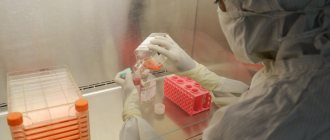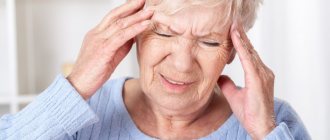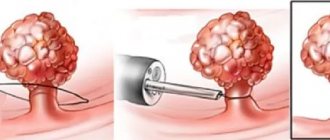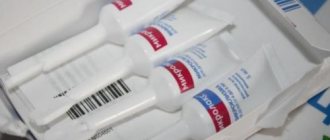Acute diarrhea
A very common condition, usually resulting from eating food or water contaminated with bacteria, their toxins, viruses and protozoa. Infectious diarrhea is usually short-lived, so an infectious cause is rarely identified in patients with diarrhea for more than 10 days. Alcohol intoxication, various drugs, including antibiotics, cytotoxic drugs, non-steroidal anti-inflammatory drugs, can cause acute diarrhea.
Traveler's diarrhea is also recognized
. It develops in the first days in people traveling to exotic regions of the planet other than their own and is associated with the consumption of food and water with a different qualitative and quantitative composition of non-pathogenic microbial flora.
We can talk about the acute nature of diarrhea if the duration is no more than 3 weeks; otherwise, diarrhea is considered chronic.
Nutrition for diarrhea (diarrhea)
- Food should be taken at least 4-5 times a day at the same hours.
- All food is only boiled or steamed; frying food is prohibited. Cold and hot dishes are not allowed.
- Table salt is somewhat limited, all dishes are under-salted.
- Drink 1.2 – 1.5 liters of liquid.
Method of preparation and consumption of products: for example, raw pureed apples help normalize stool, and when taken as part of a mixed diet, they enhance intestinal motility, and fats taken in a mixture with other products (porridge, vegetable purees) have practically no laxative effect.
Chronic diarrhea
Chronic diarrhea manifests itself in various diseases:
- stomach (atrophic gastritis, previous gastrectomy);
- pancreas (chronic pancreatitis);
- liver and gallbladder (bile duct obstruction);
- thin (enteritis, Crohn's disease, celiac disease, lactase deficiency);
- large intestine (nonspecific ulcerative colitis, Crohn's disease, non-infectious colitis, polyposis).
Of particular importance are tumor lesions of the digestive organs and endocrine glands, vascular diseases, including ischemic intestinal damage, diseases of the endocrine system (diabetes, thyrotoxicosis).
The most common cause of chronic diarrhea is a functional disorder called irritable bowel syndrome.
. This condition usually develops at a young age against the background of psycho-emotional stress and depression. With IBS, the frequency of bowel movements increases, and the stool may be soft, liquid, or pellet-like. Diarrhea rarely occurs at night and is most severe before and after breakfast. At other times of the day, the patient experiences constipation and other characteristic symptoms (pain, bloating, rumbling). The stool often contains mucus, but never blood, and the stool volume is less than 200 g. per day.
What products are prohibited?
To quickly relieve unpleasant symptoms, gentle nutrition is very important: it is necessary to completely exclude from the diet foods that irritate the intestinal mucosa.
What not to eat:
- fresh fruits and juices;
- vegetables rich in fiber: cabbage, cucumbers;
- semi-finished products: cutlets, dumplings, dumplings;
- sausages;
- fried and fatty foods;
- legumes;
- fresh pastries and bread;
- sugar and sweets;
- milk and dairy products;
- pasta;
- wheat, barley porridge;
- mushrooms;
- seasonings and sauces (ketchup, mayonnaise);
- salted and pickled dishes.
Treatment of diarrhea
Treatment depends on the specific disease, and only a doctor can recommend it.
The greatest danger to the body during heavy or prolonged diarrhea is the loss of fluid and electrolytes, which can lead to serious complications. Therefore, even before seeking medical help, it is necessary to start taking special medications - saline solutions for rehydration.
It is also important to adhere to certain dietary recommendations to prevent irritation of the intestinal mucosa and fermentation processes. Sweets and baked goods, milk, anything fatty, fried, spicy, smoked, canned food, sausages, fresh vegetables and fruits, legumes, soda, coffee and alcohol are prohibited. Recommended are porridges with water (rice, oatmeal), jelly, boiled eggs or steamed omelettes, lean meat (poultry) and soups based on it, crackers, dried fruits, low-fat cottage cheese, boiled vegetables, baked apples and bananas, herbal teas.
How to drink?
Most often, diarrhea does not pose a serious threat to health and goes away on its own within a few days.
But in severe cases, especially in young children, it can be dangerous due to dehydration, so a large fluid intake at this time is mandatory.
If diarrhea is accompanied by vomiting, then you need to drink often and in small portions:
- 1 dessert or tablespoon every 5 minutes.
If the symptoms are expressed only in intestinal upset, then you need to drink based on thirst:
- Approximate dosage: 200-250 ml. fluids per episode of diarrhea.
To avoid disturbing the water-salt balance, you need to drink liquids that contain salt and sugar.
What is recommended:
- mineral alkaline water without gas;
- salted broths;
- weak tea.
To prevent and treat dehydration, you can use pharmaceutical rehydration solutions. They can be used in both adults and children.
You can't drink:
- carbonated drinks;
- juices;
- black strong tea;
- coffee.
These products are irritating to the stomach and intestines and can only make you feel worse.
Features of the gastrointestinal tract system in old age
During the aging process, the organs of the gastrointestinal tract, from the oral cavity to the large intestine, undergo various changes:
- Oral cavity . The chewing and facial muscles are depleted, the process of digestion and chewing becomes difficult.
- Esophagus . Its shape changes, it lengthens, but the muscle layer undergoes the most changes. The risk of hernia increases, and swallowing becomes more difficult with age.
- Stomach . The vertical position is replaced by a horizontal one, the organ itself is significantly reduced. Consequently, the amount of enzymes, gastric juice and hydrochloric acid produced also decreases. Blood circulation, motility and metabolic processes in the walls of the stomach are disrupted.
- Small intestine . Food processing in this organ becomes incomplete.
- Colon . Stones appear from the stool, and “senile constipation” is increasingly observed in older people. The intestinal microflora also undergoes changes. There are more harmful bacteria, while microorganisms responsible for the fermentation of carbohydrates with the formation of lactic acid are fewer and fewer. Because of this, an increase in endotoxins and disturbances in the synthesis of vitamins K and B are observed.
- Liver . It becomes lighter, the number of functions decreases. In this regard, the metabolism of proteins, fats, carbohydrates and pigments is disrupted, and the level of neutralization of toxic substances is reduced. Transformations also affect the excretory function of the liver. Medicines are eliminated more slowly than before, and there is a cumulative effect of drugs in the body.
- Gallbladder . A situation occurs that is opposite to changes in the liver: the organ enlarges, but this also has a bad effect on its functionality. Bile does not enter the intestines on time, so there is a risk of stone formation.
- Pancreas . There is a decrease in internal and external secretory functions due to the fact that the blood supply and the number of islet and glandular cells decrease.
In older people, the body not only loses its former youth, it undergoes severe disruptions in the functioning of organs necessary for life, especially the gastrointestinal tract system.
Therefore, a person gets sick more and more often, and during the process of defecation, not only “senile constipation” is observed, but also diarrhea, which causes severe discomfort. In this regard, nutrition for diarrhea in older people is a necessary component of the course of treatment. Diets will provide old people with a healthy and long life. Read material on the topic: Sanatorium for retirees
Fecal incontinence
print version- home
- >
- For patients
- >
- Doctors' advice
- >
- Recommendations from the US Department of Health and Human Services
Where can I get tested?
| If treatment doesn't help | Popular about gastrointestinal diseases | Stomach acidity |
On the website GastroScan.ru in the Literature section there is a subsection “Popular Gastroenterology”, containing publications for patients on various aspects of gastroenterology.
Fecal incontinence
The National Digestive Diseases Information Clearinghouse of the US Department of Health & Human Services has prepared a number of recommendations and tips for patients regarding digestive problems. These recommendations are devoted to fecal incontinence
(synonymous
with encopresis
).
Content:
- What is fecal incontinence?
- Who suffers from fecal incontinence?
- How does the intestine control bowel movements?
- What are the causes of fecal incontinence?
- What tests are performed for fecal incontinence?
- How is fecal incontinence treated?
- Keep a food diary
- What foods contain fiber?
- Discomfort in the anal area
- Practical advice for patients with fecal incontinence
- If your child suffers from fecal incontinence
- What to remember
- Research offers hope
- Where to get more information
- Acknowledgments
What is fecal incontinence?
Fecal incontinence is generally referred to as a loss of control over bowel movements, resulting in the inability to hold a bowel movement until reaching the toilet. Fecal incontinence also includes involuntary leakage of solid or liquid stool, such as by the passage of gas. The word "chair", in this context, is synonymous with the word "feces".
Who suffers from fecal incontinence?
Fecal incontinence affects nearly 18 million American adults, or about one in twelve. Fecal incontinence is not always a consequence of the aging process, but it is more common in older people. Fecal incontinence is slightly more common in women than in men. Having any of the following problems may increase your risk of fecal incontinence:
- diarrhea;
- disease or injury affecting the nervous system;
- general poor health caused by several chronic or long-term illnesses;
- difficult childbirth with injuries to the pelvic floor muscles, muscles, ligaments and tissues supporting the uterus, vagina, bladder, rectum.
How does the intestine control bowel movements?
The intestines control bowel movements through the coordinated muscles and nerves of the rectum and anus, delaying the exit of stool or, conversely, releasing it. To retain stool, the last part of the colon, the rectum, must be kept under tension. The stool, by the time it enters the rectum, is usually quite dense. A circular muscle called a sphincter is tightly compressed, like a rubber ring, around the opening at the end of the rectum, the anus. They remain in a state of compression until the stool prepares to be released during defecation. The pelvic floor muscles help maintain intestinal tone.
What are the causes of fecal incontinence?
There are many reasons that can cause fecal incontinence:
- diarrhea
- constipation
- muscle damage or muscle weakness
- nerve failure
- decreased tone of the rectal muscles
- haemorrhoids
- pelvic floor dysfunction
Diarrhea.
Diarrhea can lead to fecal incontinence.
Loose stool fills the rectum faster and is more difficult to hold down than hard stool. Diarrhea increases your chances of not getting to the toilet on time. Constipation
.
Constipation, a condition in which a person has fewer than three bowel movements per week, can lead to fecal incontinence. With constipation, a large volume of hard stool sometimes forms and gets stuck in the rectum. Watery stool accumulates behind hard stool and may leak around hard stool. Long-term constipation can stretch and weaken the sphincter muscles, reducing the rectum's ability to hold stool. Muscle damage or muscle weakness.
Damage to the muscles of one or both anal sphincters can cause fecal incontinence.
If the external or internal anal sphincter muscles are damaged or weakened, they may not be strong enough to keep the anus closed and prevent stool from leaking. Damage to the sphincters can be caused by trauma, surgery for cancer or hemorrhoids. Nerve failure.
The anal sphincter muscles will not contract and relax properly if the nerves that control them are not working properly.
Likewise, if the nerve endings that respond to the concentration of stool in the rectum are not functioning properly, the person may not feel the urge to go to the toilet. Both types of nerve failure can lead to fecal incontinence. Possible sources of incorrect nerve function: childbirth, long-term habit of ignoring the urge to defecate, stroke, injuries and diseases affecting the nervous system, such as diabetes and multiple sclerosis. Decreased rectal muscle tone.
Normally, the rectum is able to stretch and store stool until defecation.
Rectal surgery, radiation therapy, and inflammatory bowel diseases such as Crohn's disease and ulcerative colitis can cause scarring of the rectal wall, making it less elastic. The rectum can no longer stretch properly to hold stool, increasing the risk of fecal incontinence. Haemorrhoids
.
External hemorrhoids, which develop under the skin around the anus, may prevent the anal sphincter muscles from completely closing the anus. In this case, a small amount of mucus or loose stool may leak through the anus. Pelvic floor dysfunction
. Improper functioning of the pelvic floor muscles or nerves can lead to fecal incontinence due to:
- decreased sensitivity of the rectum to stool filling it
- reducing the compressive ability of the muscles involved in bowel movements
- exit of rectal tissue through the anus, called rectal prolapse
- a bulge of the rectal wall into the vagina, called a rectocele
- relaxation of the pelvic floor, which may become weak and sag
Pelvic floor dysfunction may appear after childbirth. The risk of their occurrence is higher if obstetric forceps were used to remove the child or an episiotomy was performed - surgical dissection of the perineum of the mother in labor to avoid arbitrary ruptures of the vagina and birth traumatic brain injuries of the child. Fecal incontinence can appear either immediately after childbirth or several years later.
What tests are performed for fecal incontinence?
A doctor diagnoses fecal incontinence based on the patient's medical history, physical examination, and the results of diagnostic tests. Diagnosis is the key to treatment. Patients with problems with fecal incontinence may be asked the following questions:
- When did fecal incontinence start?
- How often do episodes of fecal incontinence occur?
- How much stool is leaked? Is it a chair or just soiled underwear? Is only a small amount of solid or liquid stool leaking? Or is there a complete loss of control over bowel movements?
- Is there a strong urge to defecate or does it occur without urge?
- If there are hemorrhoids, do the hemorrhoids come out through the anus?
- How does fecal incontinence affect everyday life?
- Do some foods seem to contribute more to fecal incontinence?
- Is the patient able to control flatulence (passing gas)?
Based on the answers to these questions, the attending physician may refer the patient to a specialist: gastroenterologist, proctologist, or colorectal surgeon. The specialist will examine you and may suggest one or more of the following diagnostic tests, which can be done in a hospital or clinic:
- Anorectal manometry
uses a pressure-sensitive tube to test the sensitivity and function of the rectum. Anorectal manometry also tests the ability of the anal sphincter muscles to provide the necessary compressive force and the ability to respond to nerve signals.
- Magnetic resonance imaging
(MRI) uses electromagnetic waves to produce detailed images of internal organs and soft tissue without the use of X-rays. An MRI can take images of the anal sphincter muscles.
- Transrectal ultrasound.
Ultrasound examination of the anus and rectum is performed using a special sensor called a transducer inserted into the anus. Ultrasound is a safe and painless procedure for the patient, in which images of these tissues are created using sound waves reflected from organs and tissues. Transrectal ultrasound can be used to assess the condition of the anal sphincter muscle structures.
- Proctography
, also called defecography, is an X-ray examination that shows how much stool the rectum can hold, how stool is distributed in the rectum, and how well the rectum performs bowel movements.
On the radiograph (V.D. Pasechnikov): defecography of normal defecation (left) and obstructive defecation (right).
- Sigmoidoscopy
, in which a flexible tube with an illuminator is inserted through the anus into the rectum and, further, into other lower parts of the colon, through which the intestine is examined from the inside in order to detect possible causes of fecal incontinence such as inflammation, tumors, scars.
- Electromyography
of the pelvic floor muscles and rectal muscles to determine the correct functioning of the nerves that control these muscles.
How is fecal incontinence treated?
Successful treatment is largely determined by correct diagnosis and identification of the problem. Treatment may include one or more of the following:
- food, diet, diet
- medicines
- exercises for the pelvic floor muscles
- bowel training
- surgery
- electrical stimulation.
Nutrition, diet, diet
The food eaten affects the density of the stool and the speed at which it passes through the gastrointestinal tract. If stools are difficult to control because they are too runny, foods high in fiber (dietary fiber) may add bulk and make stools more manageable. However, some patients find that high-fiber foods loosen their stools and worsen their fecal incontinence. Foods and drinks containing caffeine, such as coffee, tea, and chocolate, can relax the internal anal sphincter muscles and thereby contribute to fecal incontinence. The following dietary adjustments may improve fecal incontinence:
- Eat the right amount of protein. For many patients, fiber
(another name for
plant dietary fiber
) increases stool bulk, making it softer and easier to manage. Fiber can help with diarrhea and constipation. Fiber is found in fruits, vegetables, whole grains and beans. Fiber supplements are available in pharmacies and health food stores. Fiber foods are another universal way to treat fecal incontinence. A normal diet should include 20 to 30 grams of fiber per day. Fiber should be added gradually to avoid flatulence.
- Drink plenty. Eight 250-gram glasses of fluid a day can help prevent constipation. Water is a good choice. Drinks containing caffeine, alcohol, milk, or carbon dioxide should be avoided if they cause diarrhea.
Prolonged diarrhea can become an obstacle to the human body receiving sufficient amounts of vitamins and minerals. A doctor may recommend vitamin supplements to help treat this problem and provide information about what changes in food, diet, or nutrition may improve the patient's condition.
| Keep a food diary A food diary is used to identify foods that cause diarrhea and fecal incontinence. A food diary should record what foods are eaten, portion sizes, and when fecal incontinence occurs. After a few days, the diary may show a connection between certain foods and episodes of fecal incontinence. Reducing the number of such products can improve the situation. A food diary may also be useful for physicians treating patients with fecal incontinence. The list of foods and beverages that may be associated with episodes of diarrhea and fecal incontinence includes:
|
What foods contain fiber?Examples of foods containing dietary fiber | |
| Legumes, cereals, grains | Fiber content, g |
| ½ cup1 cooked Navy2, Pinto3, Kidney4, etc. beans | 6,2–9,6 |
| ½ cup ready-to-eat shredded unrefined wheat5 | 2,7–3,8 |
| ⅓ cup ready-to-eat 100% bran | 9,1 |
| One small muffin made from oat bran | 3,0 |
| One muffin (English muffin) made with whole grains | 4,4 |
| Fruits | |
| One small apple with peel | 3,6 |
| One medium-sized pear with peel | 5,5 |
| ½ cup raspberries | 4,0 |
| ½ cup prune compote | 3,8 |
| Vegetables | |
| ½ cup cooked pumpkin | 2,9 |
| One medium sweet potato, boiled with skins on | 3,8 |
| ½ cup boiled green peas | 3,5–4,4 |
| One small potato in its jacket (with skin) | 3,0 |
| ½ cup mixed cooked vegetables | 4,0 |
| ½ cup cooked broccoli | 2,6–2,8 |
| ½ cup cooked greens (spinach, kale, turnips) | 2,5–3,5 |
Source: USDA and US Department of Health and Human Services. Dietary Guidelines for Americans. 2010.
Medicines
If diarrhea is the cause of fecal incontinence, medication may help. To achieve bowel regularity, doctors sometimes recommend using laxatives that increase fecal bulk, such as Citrucel and Metamucil. Antidiarrheal medications, such as loperamide or diphenoxylate, may be recommended to slow bowel movements and improve bowel control.
Exercises for the pelvic floor muscles
Exercises aimed at strengthening the pelvic floor muscles sometimes lead to improved bowel function. The exercises involve squeezing and relaxing your pelvic floor muscles 50 to 100 times a day. The doctor, if necessary, will tell you about the correct technique for performing the exercises. Biofeedback therapy, which involves the use of sensors and devices that inform the patient whether he is controlling his muscles correctly, may also be useful. The success of strengthening the pelvic floor muscles through exercise depends on the cause of fecal incontinence, its severity, and the patient's ability to perform the exercises correctly.
Gut workout
Developing a daily bowel behavior routine can improve the situation with fecal incontinence, especially if fecal incontinence is associated with constipation. It is important to try to have bowel movements at a specific time, for example after each meal. Over time, the bowel will develop habits of doing certain things at the same time, thereby reducing constipation and associated fecal incontinence. Consistency over time is key to successful gut training. This type of gut training may take several weeks or months.
Surgery
Surgery may be an acceptable treatment option for fecal incontinence if it does not improve with other treatments or if fecal incontinence is caused by injury to the pelvic floor or anal sphincter. Sphincteroplasty
, the most common type of surgery for fecal incontinence, involves rejoining the separated ends of the sphincter muscles that have been severed during childbirth or other trauma. Sphincteroplasty is performed in a hospital by a colorectal surgeon, gynecologic surgeon, or general surgeon. Another operation involves placing an inflatable cuff called an "artificial sphincter" around the anus and implanting a small pump under the skin, activated by the patient, to inflate or deflate the cuff. This surgery is much less common and is performed in a hospital by a specially trained colorectal surgeon.
Electrical stimulation
Electrical stimulation of the pudendal nerve (or neuromodulation) involves placing electrodes on the nerve endings of the anal canal and rectum and continuously stimulating these endings with electrical impulses. This procedure uses a battery-powered stimulator placed under the skin.
| Discomfort in the anal area The skin around the anus is tender and sensitive. Constipation and diarrhea or skin contact with stool may cause pain or itching. The following steps may help reduce discomfort in the anal area:
|
Practical advice for patients with fecal incontinence
Because fecal incontinence can sometimes cause embarrassment, fear, and loneliness, practical steps to combat it are important. Treatment can significantly improve quality of life and help sufferers of fecal incontinence feel better. The first step is to seek medical help. The organizations listed at the end of this fact sheet can provide information, support and resources to help you find fecal incontinence specialists.
Recommendations for those suffering from fecal incontinence:
|
If your child suffers from fecal incontinence
If a toilet-trained child experiences fecal incontinence (encopresis), he or she should be seen by a doctor. Your doctor will be able to determine the cause of your fecal incontinence and recommend treatment. Fecal incontinence can occur in children due to a birth defect or medical condition, but in most cases it is due to constipation. Children often develop constipation due to retention of stool. They may hold stool because they feel uncomfortable about toilet training, are embarrassed to use a public restroom, do not want to interrupt play, or are afraid that they will have painful or unpleasant bowel movements. Just like in adults, constipation in children can lead to large, hard stools that become lodged in the rectum. Watery stool accumulates behind hard stool, causing unexpected leaks and soiling of the baby's underwear. Parents often mistake these contaminants for a sign of diarrhea.
What to remember
- Fecal incontinence is generally the inability to control the bowels and pass bowel movements before reaching the toilet.
- Fecal incontinence affects nearly 18 million American adults, or about one in twelve. People with fecal incontinence should not be afraid or embarrassed to talk to their doctor about it.
- Fecal incontinence is often caused by some health problem.
- Bowel control is accomplished through the nerves and muscles of the rectum and anus, which must work in concert to hold and release stool.
- Before defecation begins, the circular muscles located around the anus - the anus, called sphincters, must be tightly squeezed.
- The muscles, ligaments and tissues of the pelvic floor that support the uterus, vagina, bladder and rectum also help regulate bowel movements.
- Fecal incontinence can be caused by a variety of reasons, including diarrhea, constipation, muscle damage or weakness, nerve damage, loss of rectal compliance, hemorrhoids, and pelvic floor dysfunction.
- Doctors diagnose fecal incontinence based on the patient's medical history, physical examination, and medical tests.
- Successful treatment of fecal incontinence depends on correct diagnosis of the underlying causes of the disease.
- Treatment for fecal incontinence may include: dietary changes, diet, medications, pelvic floor muscle training, bowel training, surgery, electrical stimulation.
- A food diary can help identify foods that cause diarrhea and fecal incontinence.
- Steps that can help relieve anal discomfort include: washing the anal area after defecation, keeping the anal area dry, wearing breathable clothing and underwear, and quickly changing soiled underwear.
- Treatment for fecal incontinence is available. The first step is to seek medical help.
- In children, fecal incontinence can occur due to birth defects or illness, but in most cases it is due to constipation.
Research offers hope
The U.S. Department of Health and Human Services' National Institute of Diabetes and Digestive and Kidney Diseases (NIDDK) conducts and supports research into many types of digestive disorders, including fecal incontinence. NIDDK is researching ways to create new anal sphincter muscles in patients from their own cells and tissue. The US Food and Drug Administration (FDA) is currently reviewing the pudendal nerve stimulation technique, a method used in Europe to treat fecal incontinence. This method involves implanting a small electronic device that stimulates the sacral nerves that run from the spinal cord to the anal sphincter muscles. Clinical trial participants can take a more active role in their own health, gain access to new treatments before they become widely available, and help others by contributing to medical research. For information about ongoing trials, visit www.ClinicalTrials.gov.
Where can I get more information?
Fact sheets and initial reading booklets on fecal incontinence and related conditions are available from the National Digestive Diseases Clearinghouse and its website at www.digestive.niddk.nih.gov, including ( all in English
): "What you need to know about bowel management" - "Constipation"
- "Constipation in children"
- "Diarrhea"
- "What I need to know about bowel movements (for initial reading)"
- "What I Need to Know About Constipation (Initial Reading)"
- "What I Need to Know About Diarrhea (Initial Reading)"
American Academy of Family Physicians. PO Box 11210, Shawnee Mission, KS, USA 66207–1210. tel: 1–800–274–2237 or 913–906–6000, e-mail, www.aafp.org American College of Gastroenterology. PO Box 342260, Bethesda, MD, USA 20827–2260 Tel. 301–263–9000, www.acg.gi.org. American Neurogastroenterology and Motility Society, 45685 Harmony Lane, Belleville, MI, USA 48111, Tel. 734–699–1130, e-mail, www.motilitysociety.org. International Foundation for Functional Gastrointestinal Disorders. PO Box 170864, Milwaukee, WI, USA 53217–8076 Tel. 1–888–964–2001 or 414–964–1799, e-mail, www.iffgd.org. The Simon Foundation for Continence. PO Box 815, Wilmette, IL, USA 60091, Tel. 1–800–23–SIMON (1–800–237–4666) or 847–864–3913, www.simonfoundation.org.
Acknowledgments
NDDIC publications are carefully reviewed by both NIDDK scientists and outside experts. The original version of this publication was reviewed by Arnold Wald, MD, University of Pittsburgh Medical Center; Paul Hyman, MD, University of Kansas Medical Center and Diane Darrell, APRN, BC, College of Nursing Research, Kansas.
Bowel Management Awareness Campaign
The National Institute of Diabetes and Digestive and Kidney Diseases (NIDDK) is leading a campaign to disseminate evidence-based information about the symptoms, diagnosis and treatment of fecal incontinence. The information campaign was initiated by the National Information and Analytical Center for Digestive Diseases, a service of NIDDK. To download the original publication and learn more about this information campaign, visit www.bowelcontrol.nih.gov.
| You can also find more information on this topic by visiting MedlinePlus at www.medlineplus.gov. This publication contains information about medications. The latest information has been included in the preparation of this publication. For updates or questions about any drug, you can contact the US Food and Drug Administration toll-free at 1-888-INFO-FDA (1-888-463-6332) or visit www.fda. gov. Consult your doctor for more information. |
| The US Government does not endorse or patronize any specific commercial product or company. Trademarks, proprietary names or company names mentioned in this document are used only because they are considered necessary in the context of the information presented. If a product is not mentioned, it does not mean or imply that the product is unsatisfactory. |
National Information and Analytical Center for Digestive Diseases
2 Information Way, Bethesda, MD 20892–3570 Tel. 1–800–891–5389, TTY: 1–866–569–1162, fax 703–738–4929, e-mail: [email protected] , www.digestive.niddk.nih.gov. The National Digestive Diseases Clearinghouse is a service of the National Institute of Diabetes and Digestive and Kidney Diseases (NIDDK). NIDDK is one of the National Institutes of Health of the US Department of Health and Human Services. Founded in 1980, NDDIC provides information about digestive diseases to patients with digestive disorders, as well as their families, healthcare professionals and the public. NDDIC responds to requests, develops and disseminates publications, and works closely with health care professional organizations, patient organizations, and government agencies to coordinate resources in the field of gastroenterology. NDDIC publications are carefully reviewed by both NIDDK scientists and experts external to NIDDK. This publication is not protected by copyright. NDDIC encourages the reproduction and distribution of this publication in as many copies as necessary. NIH Publication No. 11-4866.
April 2011. Last updated April 30, 2012. ——————————————————————————————————
Translator’s notes.
1) Cooking cup = 227 cc.
cm liquid. 2) Navy beans are a variety of common beans. It has long been a staple of the US Navy menu. Today it is traditionally included in the daily menu of senators. 3) Pinto beans - common variegated beans 4) Kidney beans - common red beans 5) Possibly in the form of breakfast cereals made from unrefined wheat with added bran without sugar and salt, common in the USA, or bars made from compressed thin twisted wheat straws (see illustration) . Illustrations added during translation.
Back to section
| Diagnosis of gastrointestinal diseases | Symptoms of gastrointestinal diseases | Advice from doctors in the USA, Russia, etc. | Heartburn and GERD |










